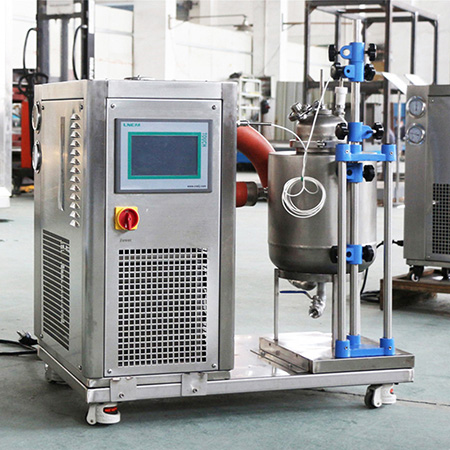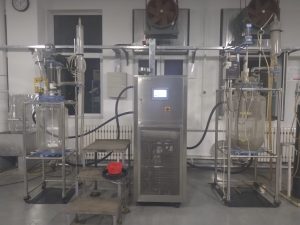¿Por qué existe el coque de aceite de transferencia de calor del dispositivo de control del sistema de transferencia de calor?
En el dispositivo de sistema de control de aceite de transferencia de calor, el aceite de transferencia de calor se utiliza para el control de la temperatura de refrigeración y calefacción. Si no es el mismo que el LNEYA, el uso del circuito completamente cerrado puede afectar a la formación de cierta coquización, resu...
In the heat transfer oil control system device, three main chemical reactions occur in the heat transfer process: thermal oxidation reaction, thermal cracking and thermal polymerization. Coking occurs from thermal oxidation reactions and thermal polymerization reactions. The thermal polymerization reaction occurs because the heat transfer oil is heated during the operation of the heating system, and the reaction generates macromolecular high-boiling substances such as condensed aromatic hydrocarbons, colloids and asphaltenes, which are gradually deposited on the surface of the heater and the pipeline to form coking.
The thermal oxidation reaction of the heat transfer oil is mainly caused by the heat transfer oil in the expansion tank of the open heating system contacting the air or participating in the circulation, and the reaction generates low-molecular or high-molecular acidic components such as alcohol, aldehyde, ketone, acid, etc., and further generates Glue, asphaltene and other viscous substances, then form coking; thermal oxidation is caused by abnormal conditions, once it occurs, it will accelerate thermal cracking and thermal polymerization, so that the viscosity increases rapidly, heat transfer efficiency decreases, causing overheating and furnace tube Coking. The resulting acid can also cause corrosion and leakage of equipment.

The heat transfer oil control system device heat transfer oil will form a heat insulation layer during use, resulting in a decrease in heat transfer coefficient, an increase in exhaust gas temperature, and an increase in fuel consumption. On the other hand, since the temperature required for the production process remains unchanged, The heating temperature rises sharply, causing cracks, causing serious accidents such as equipment and operator personal injury.
In the heat transfer oil control system device, if the heat transfer oil has a coking failure, the heat transfer oil control system device will be unavailable, and the heat transfer oil control system device is required to perform certain maintenance work.
(This article is from the source network. If there is any infringement, please contact LNEYA for deletion, thank you.)
Recomendaciones relacionadas
-
How To Solve The Electric Vehicle Motor Test Condensation Is Too High?
1088The condensing pressure of the electric vehicle motor test will increase, the compression function will increase, the cooling capacity will decrease, the cooling coefficient will decrease, and the energy consumption will increase. The reason for t...
Ver detalles -
enfriadoras hidráulicas enfriadoras industriales/de laboratorio?
813Los refrigeradores hidráulicos no son directamente equivalentes a los refrigeradores industriales o de laboratorio, pero tienen cierta relevancia y coinciden en su función. Todos ellos son dispositivos utilizados para proporcionar efectos de refrigeración. La principal diferencia radica en la ap...
Ver detalles -
Precauciones para la refrigeración y el calentamiento durante el funcionamiento de diversos reactores
906En muchos laboratorios, diversos recipientes de reacción de empresas químicas son recipientes de reacción indispensables, y su temperatura de funcionamiento: -80°C-250°C. El reactor de laboratorio funciona a temperatura normal, y el agua de refrigeración debe pasar normalmente a un...
Ver detalles -
Benefits of Winterizing and Degassing Prior to Distillation
936Prior to distilling oil, you should follow a winterization and degassing procedure. The winterization will remove fats, waxes, and other inactive and unwanted compounds. Degassing will remove any solvents and other inactives with low boiling point...
Ver detalles
 LNEYA Enfriadoras industriales Fabricante Proveedor
LNEYA Enfriadoras industriales Fabricante Proveedor













